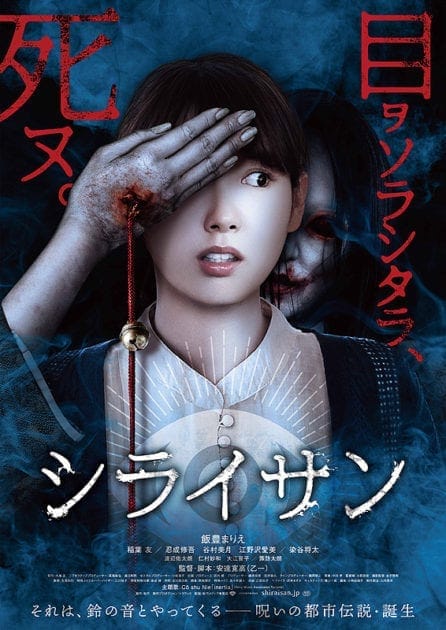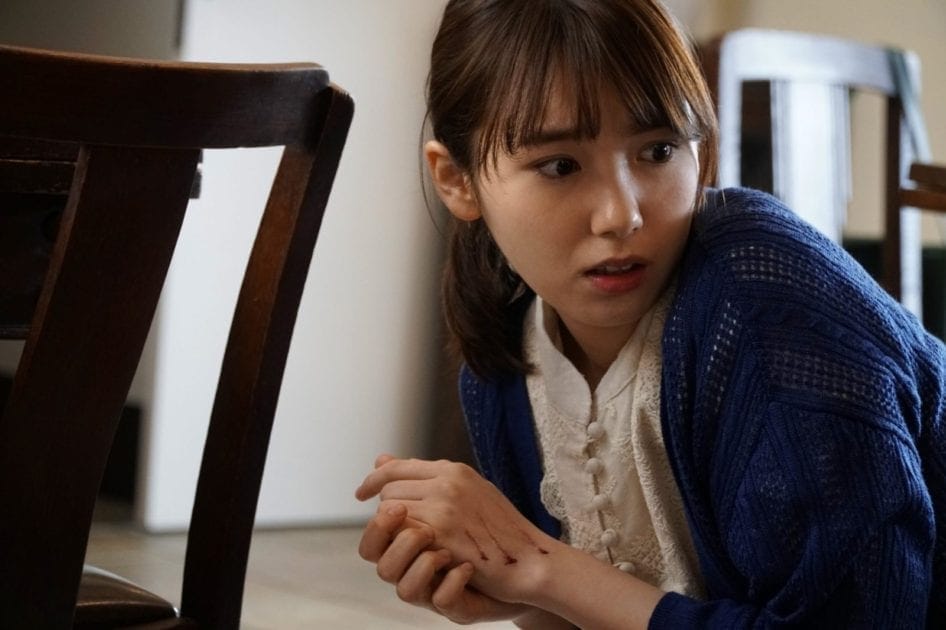Stare 2019 Delivers Exploding Eyes Like Momo In J Horror Gem
Stare (Shirai-san) review: Japanese horror that channels The Ring and Momo viral sensation. Marie Iitoyo and Yu Inaba investigate supernatural deaths with exploding eyes. Director Hirotaka Adachi crafts atmospheric dread on a low budget with effective practical effects and social media commentary.

Stare (aka Shirai-san) crawls from the same primordial gene pool as The Ring and every other folklore curse movie that’s ever made you check your phone at 3 am. But here’s the kicker: this Japanese horror entry feels like someone took the notorious Momo viral sensation and gave her a proper cinematic backstory. If you’ve ever seen that bird-legged nightmare fuel, you’ll spend half this movie wondering if director Hirotaka Adachi was scrolling through creepypasta threads for inspiration.
While this review avoids major ending reveals, some scenes and stylistic choices are discussed in detail. Proceed if you’re cool with that.
Exploding Eyes and Social Media Curses
The premise hooks you immediately: bodies dropping with ruptured eyeballs, victims dying of heart attacks after acting possessed. It’s a forensic examiner’s fever dream wrapped in urban legend packaging. University student Mizuki (Marie Iitoyo) watches her friend die in front of her, because nothing says “college experience” like witnessing supernatural cardiac arrest. Meanwhile, Haruo (Yu Inaba) loses his younger brother to the same mysterious fate.
What makes this 98-minute descent into ocular horror particularly unsettling is how Adachi treats the curse like social media contagion. Shirai-san doesn’t just kill – she networks. The parallel to how viral sensations like Momo spread through digital whispers isn’t accidental. When someone describes Shirai-san as having “abnormally large eyes” and operating like a social media app, the connection crystallizes into something genuinely unnerving.
The Slow-Burn Breadcrumb Trail
Adachi’s narrative structure employs deliberate pacing that some might call leisurely, but I found it genuinely effective. The story potters along, dropping breadcrumbs like a digital Hansel and Gretel, withholding the full picture until you’re halfway committed to the journey. This isn’t revolutionary storytelling; it’s a well-worn path in J-horror, but the execution feels solid enough to maintain engagement.
The investigative elements follow familiar beats: authorities dismiss obvious supernatural patterns, a journalist arrives to challenge the official narrative, and characters make questionably stupid decisions in the name of plot progression. Yet somehow, it works. Maybe it’s the way Adachi handles the inevitable romance subplot with genuine eloquence, or perhaps it’s the restraint shown in building tension without resorting to constant jump scares.
Practical Horror on a Shoestring Budget
You can practically smell the oily rag this film was made on, but that constraint breeds creativity rather than limitation. The off-screen violence and implied gore create more atmospheric dread than most big-budget splatter fests manage with gallons of corn syrup. When the film finally delivers its promised exploding eyes sequence, the wait feels earned. It’s a perfect “splash for cash” moment that demonstrates how effective practical effects can be when deployed strategically.
The sound design deserves particular recognition, every bell chime becomes a potential harbinger of doom. Adachi understands that horror lives in anticipation, not revelation. The flickering lights and distant figure approaching through darkened corridors tap into primal fears about being watched, being followed, being selected.
Where Viral Horror Meets Traditional Folklore
What elevates Stare beyond simple curse-passing horror is its commentary on how modern fears manifest through ancient storytelling structures. Shirai-san operates like a malevolent algorithm, selecting victims through mysterious criteria and spreading through human connections rather than digital transmission. It’s Momo with better character development and actual stakes.
The film stumbles occasionally with pacing issues that feel like editing choices rather than narrative ones, moments where the flow breaks just enough to remind you you’re watching a constructed story. These aren’t fatal flaws, but they prevent the film from achieving the seamless dread that marks truly great J-horror. (For more, watch Tokyo!)
Marie Iitoyo and Yu Inaba carry the emotional weight convincingly, never letting their characters devolve into horror movie archetypes. Their investigation feels genuine rather than perfunctory, and their growing connection provides necessary humanity amid the supernatural chaos.
Final Verdict: Finger Puppets Make Everything Scarier
Stare succeeds as both homage to classic J-horror and contemporary commentary on viral fear culture. It’s restrained where it needs to be, delivers when it promises to, and maintains atmospheric tension throughout its runtime. While it won’t redefine the genre, it demonstrates that traditional horror storytelling still has teeth when executed with care and creativity.
For fans of Ringu, Candyman, or recent entries like Head Count, Stare offers familiar pleasures with enough original flavor to justify the watch. Just don’t blame me if you start side-eyeing every bell you hear afterward.
Stare is rated
3 finger puppets make telling ghost stories great again out of 5
Stare 2020 (検索) is Streaming on These Platforms
Film Information
Cast:
- Marie Iitoyo as Mizuki
- Yu Inaba as Haruo
- Shugo Oshinari as Kota Mamiya
- Mitsuki Tanimura as Fuyumi Mamiya
- Manami Enosawa, Shota Sometani, Kana Kato, Hideaki Watanabe
- Additional cast: Yutaro Watanabe, Sawa Nimura, Shinpei Ooe, Taro Suwa
Technical Details:
- Director/Screenwriter: Hirotaka Adachi | 検索
- Runtime: 98 minutes
- World Premiere: Fantasia Festival 2019 (July 17)
- Official Release: January 10, 2020
- Theme Song: “Inertia” by Cö Shu Nie
- For another Japanese horror movie, watch Manhole.

